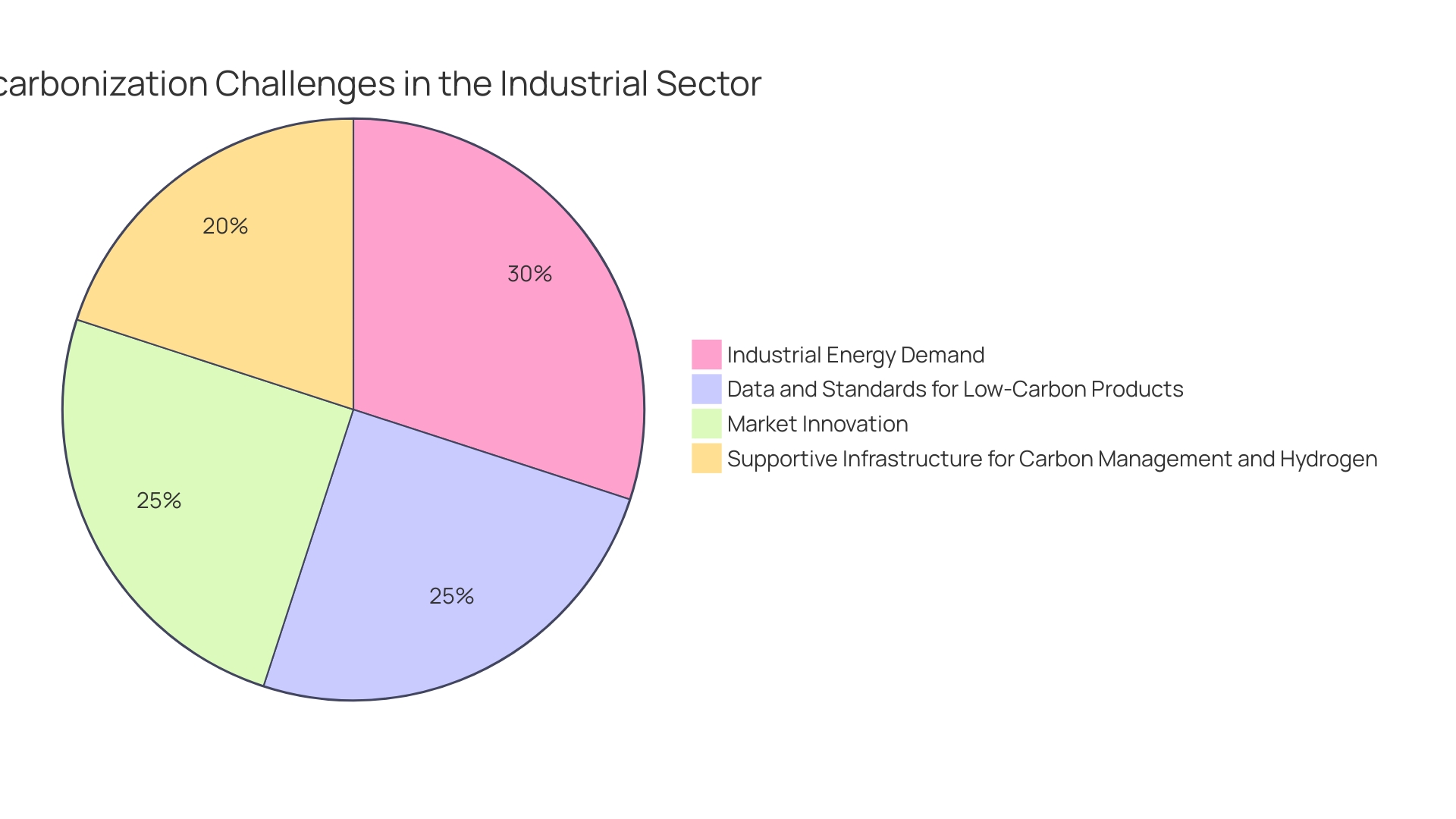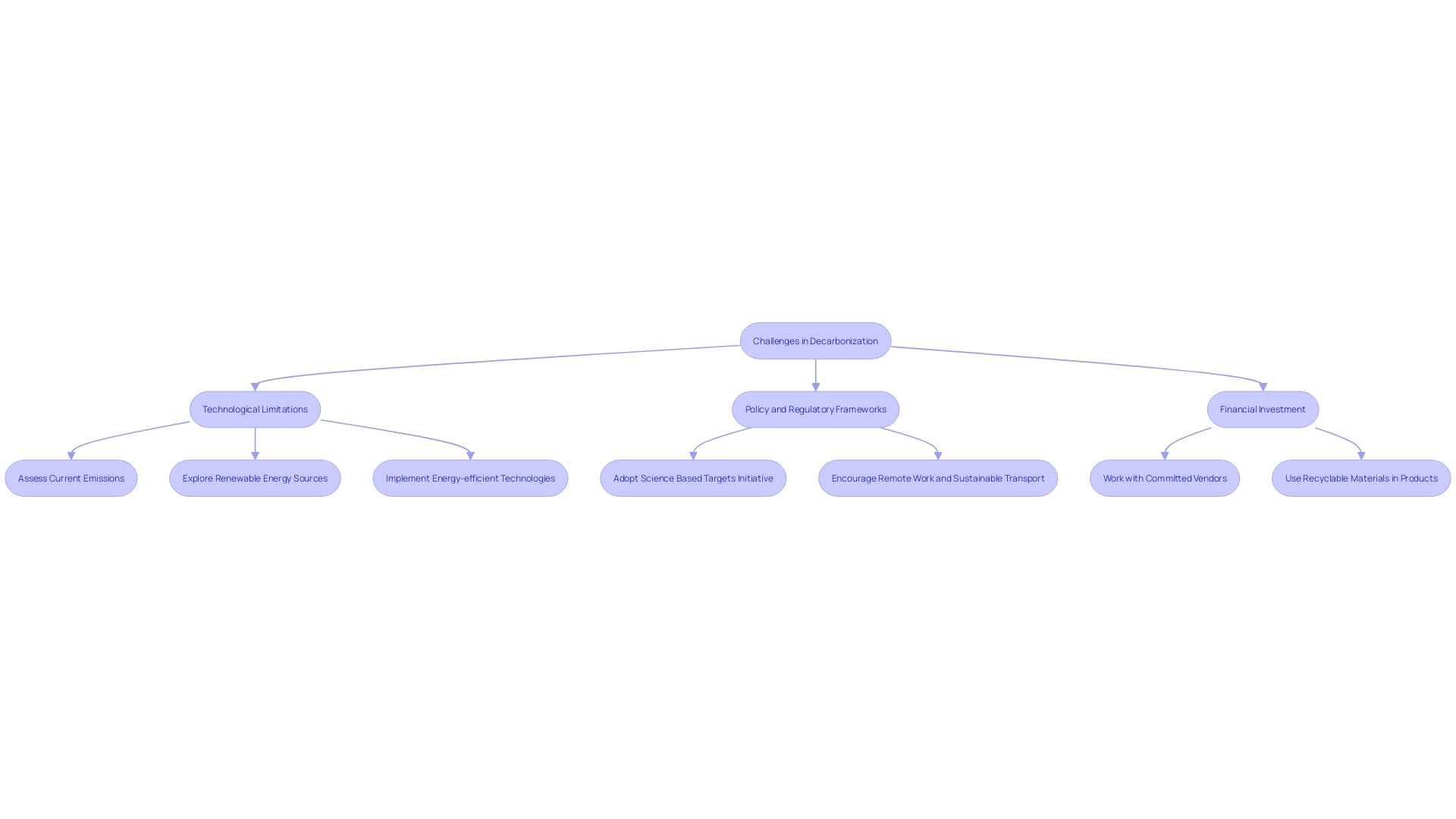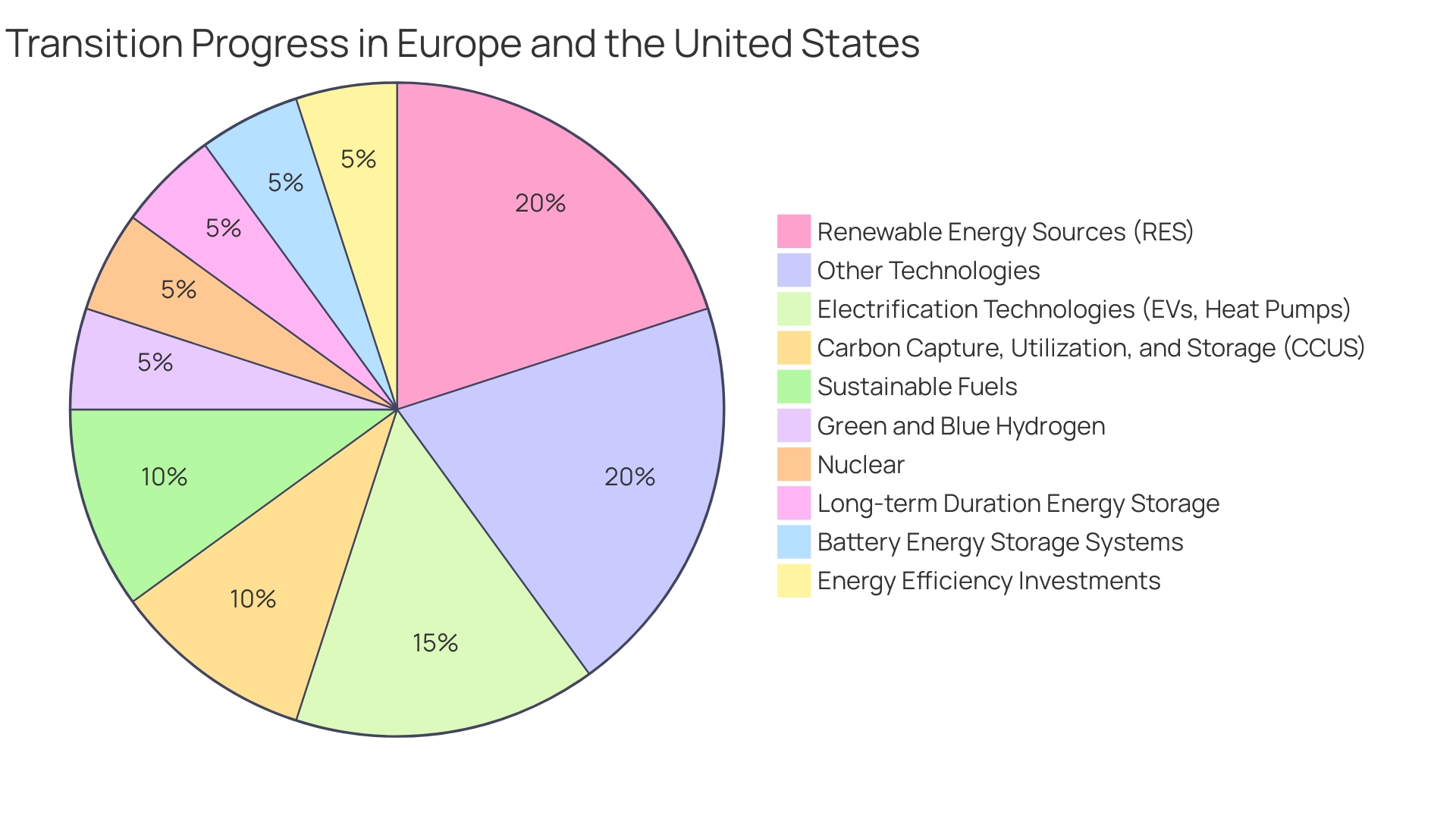Introduction
Decarbonization is a crucial process for industries looking to reduce their carbon footprint and embrace a more sustainable future. Enhancing energy efficiency and transitioning from fossil fuels to renewable energy sources are key strategies in achieving this goal. Investments in infrastructure like solar and wind power, as well as the electrification of vehicles and appliances, play a significant role in lowering greenhouse gas emissions.
Innovations in nuclear energy and the development of low-carbon fuels further contribute to decarbonization efforts. However, decarbonizing current processes can only mitigate a portion of emissions, highlighting the need for innovative business models and sustainability integration throughout value chains. Industrial sectors, such as automotive, aviation, and construction, are actively pursuing decarbonization strategies tailored to their unique challenges and opportunities.
Overcoming technological limitations, establishing supportive policy frameworks, and securing financial investment are some of the challenges faced in achieving net-zero emissions. Despite these obstacles, successful decarbonization initiatives have emerged in various industries globally, demonstrating the practicality and accessibility of reducing carbon footprints. These case studies provide valuable insights into real-world policy formation and the complexities of transitioning to a low-carbon future.
The energy transition is a vast undertaking that requires a deep understanding of the interdependencies across different system components. By addressing these challenges and working collectively across industries, a sustainable future can be realized.
Key Strategies for Decarbonization
Decarbonization is an essential process for industries to embrace in order to reduce their carbon footprint and move towards a more sustainable future. A key strategy for achieving this is to enhance energy efficiency and reduce consumption. Through the adoption of energy-efficient technologies and practices, industries can significantly lower their greenhouse gas emissions.
Another pivotal element in decarbonization is the transformation of the energy sector by transitioning from fossil fuels to renewable energy sources. Investments in infrastructure such as solar and wind power are fundamental to this shift. Alongside this, the electrification of vehicles and appliances can further reduce reliance on fossil fuels, with renewable energy playing a substantial role in lowering emissions.
Innovations in nuclear energy and the development of low-carbon fuels, including hydrogen and biofuels, are also instrumental. Nuclear power provides a clean and dependable energy source, whereas low-carbon fuels present more sustainable alternatives to conventional transportation fuels.
Recent studies have highlighted that decarbonizing current processes can only mitigate around 30-40% of emissions. To achieve net zero, industries must innovate their business models and value chains, integrating sustainability into their core operations. Companies such as Novamont have exemplified this by producing bioplastics that enhance circularity and reduce environmental impacts.
The complexity of industrial processes, including 'process emissions' from manufacturing, presents challenges in policy-making and achieving decarbonization. However, the industrial sector's role in the economy and job creation underscores the importance of overcoming these challenges. Tailored solutions for subsectors and individual facilities are necessary to address the unique energy requirements and associated emissions.
As industries continue to evolve, energy-efficient technologies are critical. They have been instrumental in reducing oil demand in the transport sector and decreasing fossil fuel use in manufacturing. Amidst a global energy crisis, governments are intensifying their focus on energy efficiency to reduce reliance on high-priced fossil fuels and support clean energy transitions.
Ultimately, to meet targets such as those outlined in the Paris Agreement, significant reductions in global industrial emissions are required. This goal is technically achievable, but other barriers related to social, economic, or infrastructure issues must be addressed to realize full decarbonization.
Decarbonizing Operations Across Sectors
Decarbonization strategies are essential for sustainable growth in various industries, each facing unique challenges and opportunities. The automotive sector is rapidly shifting gears towards electric vehicles (EVs), with companies like Volvo setting ambitious targets to achieve 100% EV sales by 2030. They have already introduced several electric models and continue to innovate, aiming to completely phase out internal combustion engines from their lineup. Decarbonization in this sector also involves enhancing the EV charging infrastructure and adopting sustainable manufacturing processes to shrink the industry's carbon footprint.
The aviation industry is soaring towards sustainability by investigating alternative fuels, increasing aircraft efficiency, and refining air traffic management. These measures are crucial given the substantial carbon emissions attributed to commercial vehicles, including the aviation sector, which contributes significantly to Europe's CO2 output.
In the realm of construction and real estate, the building sector is laying the foundation for a greener future. Energy-efficient design and construction, coupled with the retrofitting of existing structures with eco-friendly technologies, are pivotal strategies. These approaches are exemplified by Søstrene Grene, a Danish retailer, which has partnered with Maersk to integrate decarbonization solutions into their supply chain, illustrating the importance of sustainable expansion.
Moreover, the Vatican City State's 'Ecological Conversion 2030' program exemplifies a commitment to reducing the CO2 footprint through the adoption of electric vehicles, partnering with Volkswagen to transition their fleet to CO2-neutral status by 2030.
The challenges of decarbonization are complex, spanning across supply chains and necessitating collaboration, as highlighted during a masterclass conducted by WBCSD and BCG. However, resources like the Decarbonizing Industry Resource Tool (DIRT) are available to assist in identifying financial incentives and fostering the transition toward net-zero industrial projects.
In summary, decarbonization is not a solitary journey but a collective endeavor requiring engagement across industries, from automotive and aviation to construction, to create a sustainable future.

Challenges and Barriers to Net-Zero Emissions
Decarbonization is the process of reducing carbon dioxide emissions, which is critical for fighting climate change and achieving net-zero emissions. Despite the clear benefits, it faces several challenges:
-
Technological Limitations: The energy transition requires the transformation of seven domains, including power, mobility, industry, and buildings, along with enablers like raw materials, new fuels, and carbon and energy reduction. Overcoming the technological limitations and scaling these innovations to meet the demands of a transformed energy system presents a significant challenge. Historical data from the 'Historical Adoption of Technology' (HATCH) dataset suggests that while the scale-up of carbon removal technologies fits within the historical range of technology adoption, the pace needed for climate targets implies a much faster growth.
-
Policy and Regulatory Frameworks: Inconsistent or inadequate policy can hinder progress. A net-zero greenhouse gas (GHG) economy by 2050 will require a clear and supportive policy environment, as indicated by the 'Roads to Removal' report, to catalyze the transition to greener practices.
-
Financial Investment: Decarbonization is substantial, necessitating significant financial investment. With solar and wind power now accounting for over 10 percent of electricity generation and electric vehicles 15 percent of new vehicle sales, the financial commitment to such sustainable technologies is evident. However, the lack of funding and access to capital remains a barrier to further adoption.
Innovation remains a beacon of hope amidst the challenges. The emergence of a new energy economy suggests that, with continued commitment and investment, the obstacles to decarbonization may be surmounted, as seen in the recent advancements in low-emissions technologies and policy reforms.

Case Studies: Successful Decarbonization Initiatives
Advancements in decarbonization are not confined to theoretical discussions; they are unfolding tangibly across various industries globally. In the automotive realm, Tesla Motors is a vanguard, propelling the shift towards electric vehicles and sustainable transportation. Similarly, in aviation, KLM Royal Dutch Airlines has embraced biofuel-powered flights as part of its commitment to sustainable aviation, contributing to a decrease in carbon emissions. The Bullitt Center in Seattle epitomizes sustainable construction within the building sector, incorporating energy-efficient designs that demonstrate the vast potential of green buildings.
Moreover, Denmark's energy sector showcases a transition away from coal-fired power plants towards wind power, emphasizing the nation's dedication to decarbonizing its energy sources. These examples underscore the practicality of decarbonizing initiatives and their accessibility for both industries and governments aiming to reduce carbon footprints.
Further afield, countries with diverse economic standings and political climates are undertaking significant climate policy designs and implementations. India's solar power expansion, Mexico's innovative waste-to-energy initiatives, and the progression of Colombia's construction industry towards greener practices exemplify the global momentum towards decarbonization. These initiatives demonstrate the multifaceted objectives of climate policies, such as enhancing energy security and competitiveness while also diminishing air pollution.
In Peru, the decarbonization of transportation is tackled in the face of overwhelming traffic congestion in Lima. The country grapples with the challenge of curbing air pollution and traffic accidents while managing an increase in private vehicle use, even as the majority of commutes happen via public transport. Such real-world instances provide rich insights into the pragmatic aspects of policy formation and the necessary compromises involved in actualizing a low-carbon future.
The energy transition is a colossal undertaking, involving the transformation of seven interlinked domains of the energy system. This transition is just beginning and encompasses domains such as power, mobility, industry, buildings, raw materials, new fuels, and carbon and energy reduction strategies. The complexity of these challenges emphasizes the importance of understanding the physical realities of the energy transition and the interdependencies across different system components.

Conclusion
Decarbonization is crucial for industries to reduce their carbon footprint and embrace a sustainable future. Key strategies include enhancing energy efficiency, transitioning to renewable energy sources, and developing low-carbon fuels. Investments in solar and wind power, electrification of vehicles and appliances, and innovations in nuclear energy contribute to lowering greenhouse gas emissions.
However, decarbonizing current processes can only mitigate a portion of emissions. Innovative business models and sustainability integration throughout value chains are needed. Automotive, aviation, and construction sectors are actively pursuing tailored decarbonization strategies.
Successful decarbonization initiatives globally demonstrate the practicality of reducing carbon footprints. Case studies like Tesla Motors, KLM Royal Dutch Airlines, and the Bullitt Center exemplify tangible progress. Insights from these examples inform policy formation and the complexities of transitioning to a low-carbon future.
The energy transition is a vast undertaking requiring a deep understanding of interdependencies across different system components. By addressing challenges collectively across industries, a sustainable future can be realized. Advancements in low-emissions technologies and policy reforms offer hope in overcoming barriers to decarbonization.
With continued commitment and investment, we can pave the way for a greener world.
Join the movement towards decarbonization and reduce your carbon footprint today!




